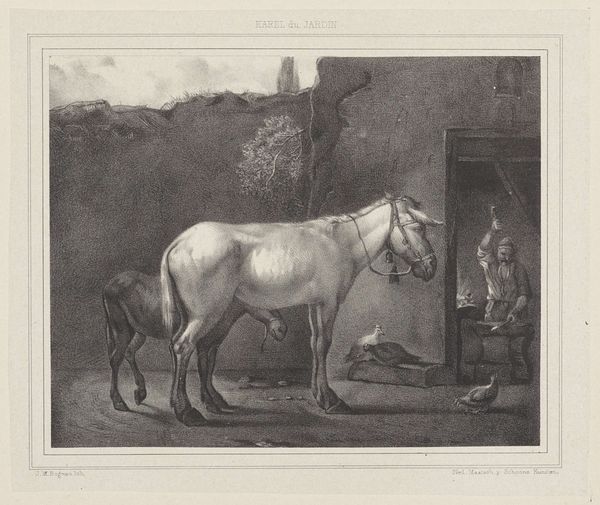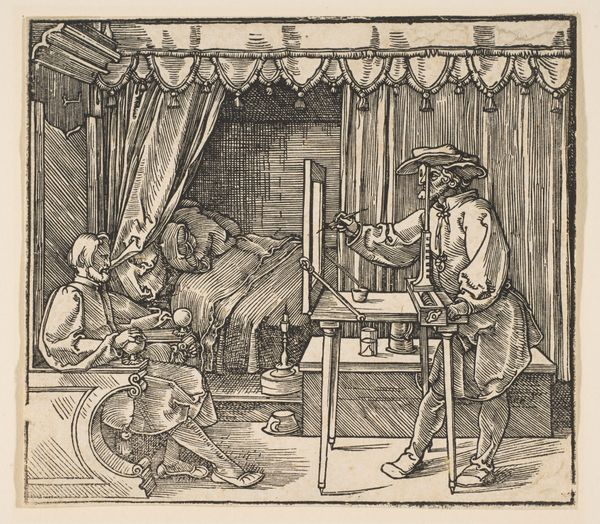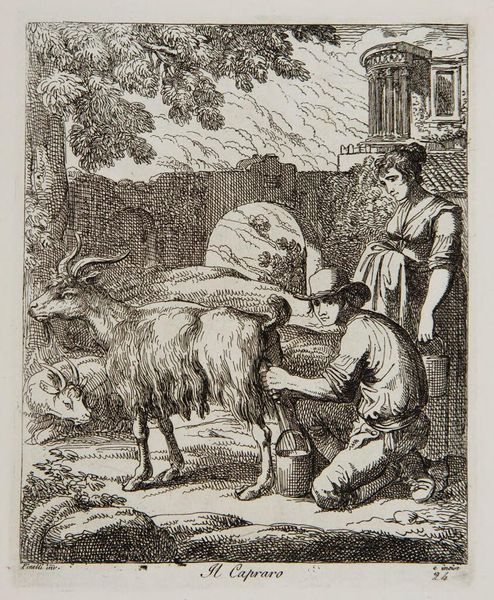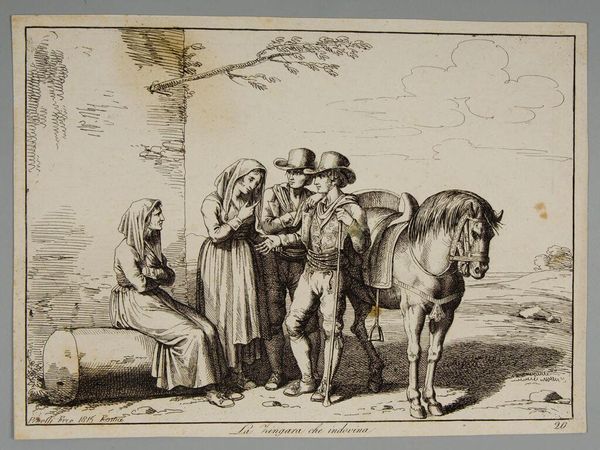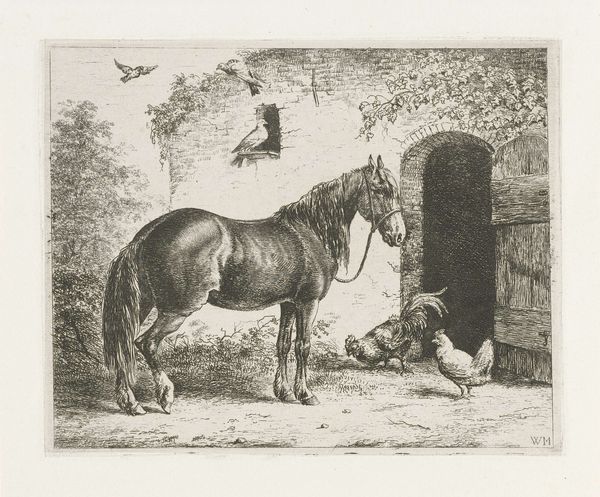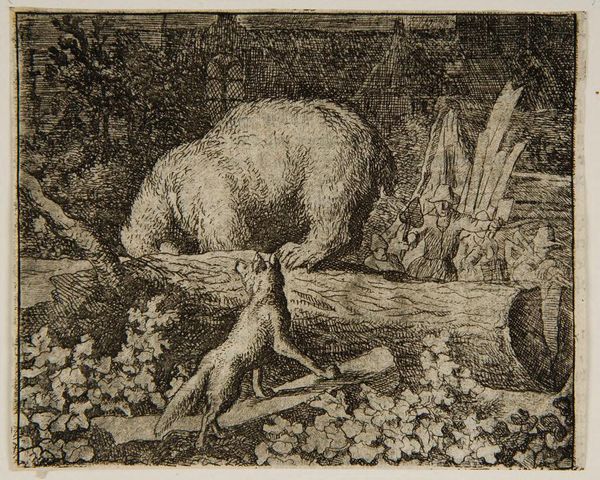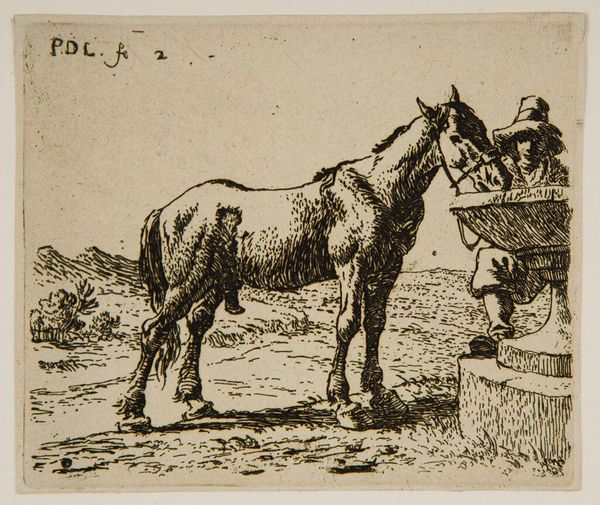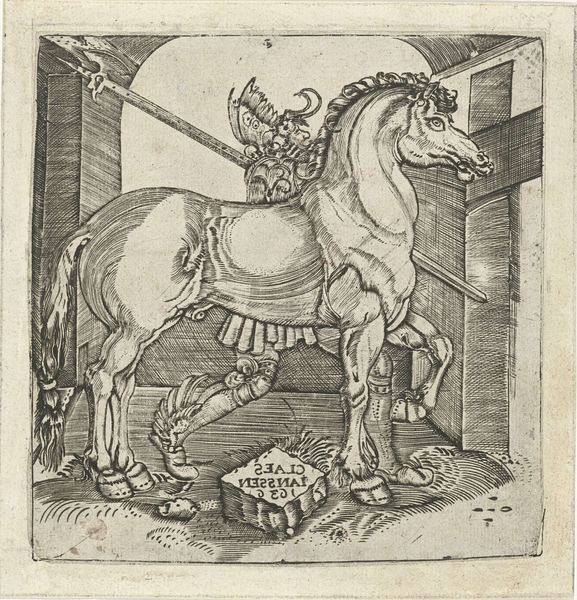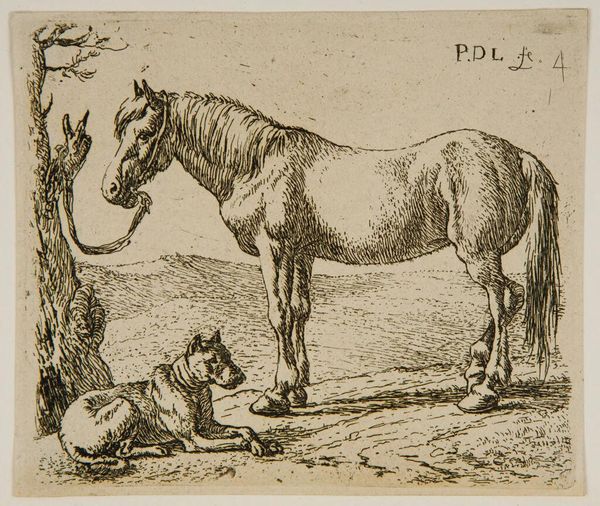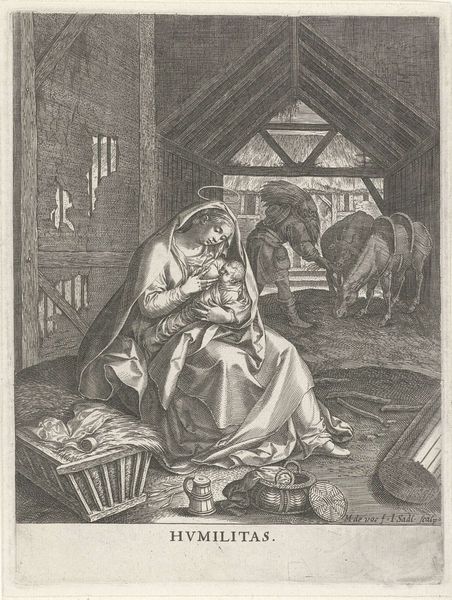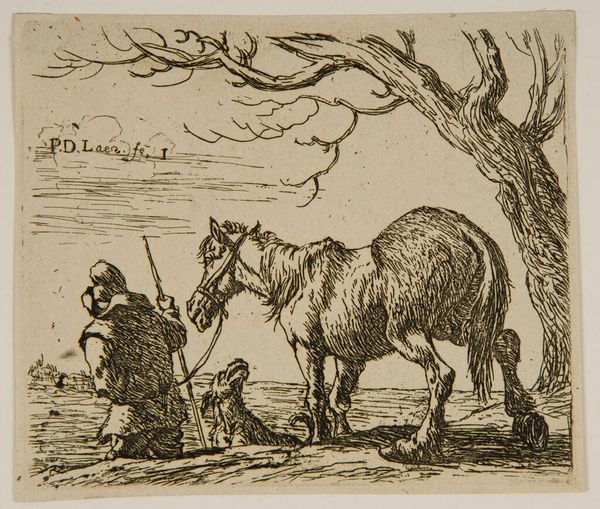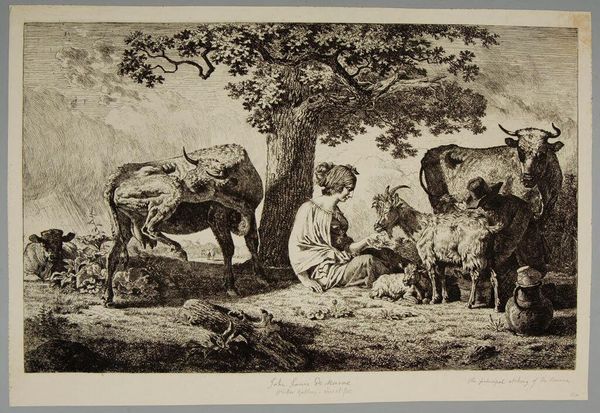
Mother and Children in a Stable (from Hosack Album) 1843 - 1846
0:00
0:00
drawing, pencil
#
portrait
#
pencil drawn
#
drawing
#
facial expression drawing
#
mother
#
pencil sketch
#
dog
#
landscape
#
boy
#
figuration
#
group-portraits
#
romanticism
#
pencil
#
horse
#
portrait drawing
#
genre-painting
Dimensions: 8 1/8 x 9 1/4 in. (20.6 x 23.5 cm)
Copyright: Public Domain
Editor: So, this is "Mother and Children in a Stable" by David Hosack, done between 1843 and 1846, a pencil drawing held at the Met. It's quite charming, almost like a snapshot of rural family life. What strikes me is the contrast between the darkness inside the stable and the light outside. What do you see in this piece? Curator: It's a compelling image precisely because of that staged intimacy, wouldn’t you say? We see a picturesque domestic scene, but framed within the context of the agricultural landscape. How might we read the role of the stable itself – is it a romantic retreat, or is it about the place of women, children, and animals within an economy? Editor: That's interesting, I hadn't thought about the economic context. I guess I was more focused on the personal relationships, the way the children interact with the animals. Curator: And that’s precisely the artist’s skillful manipulation. We have a controlled depiction of the family and nature in harmony, masking or perhaps aestheticizing the realities of labour and social hierarchies within that period. Does the seeming tranquility deflect attention from more complex narratives of class and labor? Editor: I suppose it does, at least initially. Seeing the mother there, with the children, it looks like a cozy, idyllic scene, almost forgetting it’s set in a working stable. Curator: Right. And the Romantics were good at this. They were excellent at making statements about family and the role of landscape within society. This piece allows us to discuss what gets prioritized in visual depictions of history. How is it trying to make us *feel* versus making us *think*? Editor: That definitely changes how I see it. It’s more than just a simple family portrait; it’s a statement about societal values and what was deemed worthy of representation. Thank you for sharing this cultural context, Curator! Curator: A vital point, Editor. Always question what a work wants you to believe and, just as crucially, what it leaves unsaid.
Comments
No comments
Be the first to comment and join the conversation on the ultimate creative platform.
